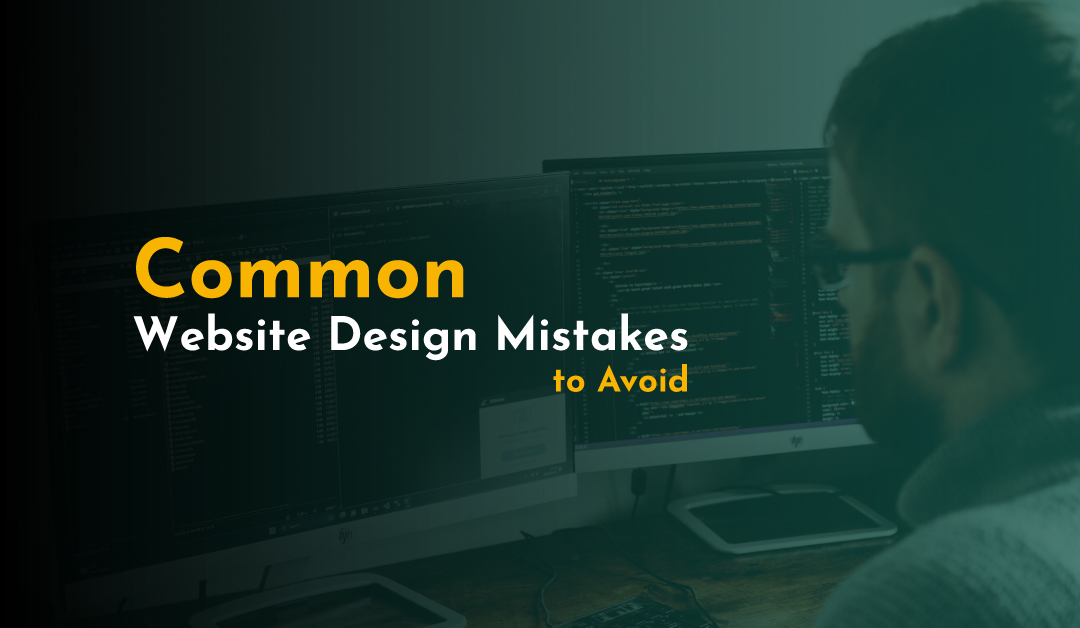Common Website Design Mistakes to Avoid
In the digital age, your website is often the first interaction potential customers have with your brand. It’s your virtual storefront and a powerful marketing tool. However, the effectiveness of your website is greatly influenced by its design. Common website design mistakes can deter visitors, impact user experience, and hinder your online goals.
In this blog, we’ll explore some of the most prevalent website design mistakes and how to avoid them.
1. Neglecting Mobile Responsiveness
In today’s mobile-driven world, neglecting mobile responsiveness is a grave mistake. Your website must adapt seamlessly to different screen sizes and devices. Failing to do so can result in poor user experiences, high bounce rates, and a drop in search engine rankings.
Solution: Use responsive design principles to ensure your website functions and looks good on smartphones, tablets, and desktops. Test your website on various devices and browsers to ensure compatibility.
2. Cluttered and Complex Layouts
Overloading your website with excessive text, images, and design elements can overwhelm visitors and make it challenging for them to find what they’re looking for. A cluttered layout can also slow down your site’s loading speed.
Solution: Embrace minimalism and prioritize clean, organized layouts. Use white space effectively, and focus on providing a clear and intuitive navigation structure. Keep your content concise and visually appealing.
3. Poor Typography Choices
Typography plays a significant role in user readability and overall design aesthetics. Using overly complex or inappropriate fonts can hinder legibility and detract from your website’s professionalism.
Solution: Choose legible fonts for both body text and headings. Maintain consistency in font styles and sizes throughout your website. Pay attention to line spacing and text contrast to enhance readability.
4. Ignoring Page Loading Speed
Slow-loading websites frustrate visitors and can lead to high bounce rates. Search engines also consider page speed when ranking websites, so a sluggish site can impact your search visibility.
Solution: Optimize images and multimedia files, enable browser caching, and use content delivery networks (CDNs) to improve loading times. Regularly test your website’s speed and make necessary adjustments.
5. Lack of Clear Call-to-Action (CTA)
If your website doesn’t guide visitors toward taking specific actions, such as signing up for a newsletter, making a purchase, or contacting you, you’re missing out on valuable opportunities.
Solution: Incorporate clear and compelling CTAs throughout your website. Use action-oriented language and strategically place CTAs to encourage user engagement.
6. Poor Navigation Structure
Complex navigation menus or illogical organization can confuse visitors and deter them from exploring your website further. Users should be able to find the information they seek with ease.
Solution: Create a logical and user-friendly navigation structure. Use clear labels for menu items, and consider using breadcrumb trails or search functions for larger websites.
7. Neglecting SEO Optimization
Search engine optimization (SEO) is vital for increasing your website’s visibility in search engine results. Neglecting SEO can result in low organic traffic.
Solution: Research relevant keywords, optimize meta tags, create high-quality content, and build backlinks. Regularly monitor your website’s SEO performance and make necessary improvements.
Avoiding common website design mistakes is crucial for creating a positive user experience, enhancing your brand’s credibility, and achieving your online goals. Regularly review and update your website design to stay in line with best practices and user expectations. By prioritizing mobile responsiveness, simplicity, readability, and SEO optimization, you can create a website that not only looks appealing but also effectively serves your audience and drives your online success.

